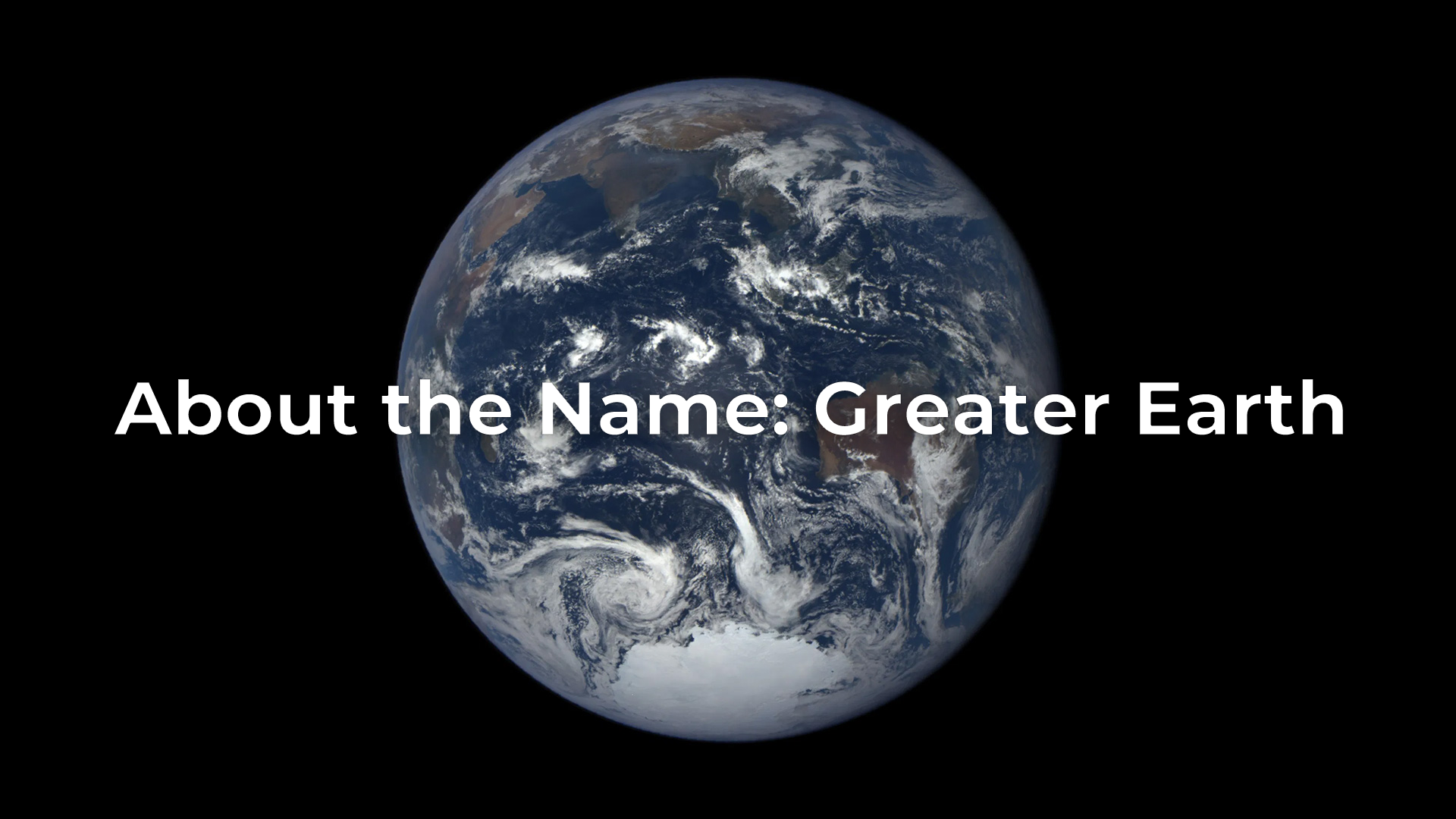
About the Name: Greater Earth
The first time I was exposed to the Greater Earth concept was in this article which appeared in Space News on March 21, 1994 . I personally do not know if the concept and name of Greater Earth was coined there for the first time but it is the earliest reference that I have found.
Arthur Woods
It's Greater Earth, Stupid
by Elisa Griffin Wynn and Kevin Griffin
The sign in the Clinton-Gore campaign that became a political legend read, ''It's the economy, stupid.'' That ever-present reminder helped give the campaign its focus, keeping it on course in the face of constant diversions.
Conventional wisdom has it that such a focus -- in the form of a visionary goal -- is what the U.S. space program needs more than anything else. Its dismal lack of vision was recently demonstrated by the shortsightedness of sending a gamma ray spectrometer to Mars, which of course went the way of the the ill-fated Mars Observer spacecraft that carried it.
The absurdity is not that we sent a gamma ray spectrometer millions of miles to Mars, but that we did so at the expense of putting one in orbit around our own moon. Year after year the Lunar Polar Orbiter mission was held hostage to Mars Observer, only to ultimately be denied even the promised back-up spacecraft. Meanwhile, the straightforward, but vitally important job of mapping the moon for resources remains undone. We continue to give lip service to human missions to Mars instead of using the U.S. space investment to improve the future.
That future will remain an unfocused dream unless the United States stops confusing vision with fantasy. Fantasy is sending astronauts to Mars. NASA does not have the fail-safe, closed life support systems, nuclear propulsion, or other minimum capabilities necessary for the trip to Mars, nor will they be achieved in the next decade.
A useful vision for the space program's future must be based on challenging, but attainable goals and offer a meaningful payoff proportionate to the investments required. Only one destination is both reachable and worth reaching. It includes not only Earth's moon, but also Greater Earth -- the special part of the Solar System defined by Earth's gravity.
Why is a Greater Earth focus so important? One compelling reason is the Earth's current energy resources cannot meet the demands of the planet's burgeoning population without catastrophic environmental costs. Space power systems can be built. But the only way to build space-based power systems economically is to use extraterrestrial resources. And the problems this world will face in the coming century will be far easier to manage in an energy-rich world than an energy-starved one. Only by learning how to live fully within Greater Earth will humanity win a genuinely sustainable economy and environment. Now that is a vision worth embracing.
Who can replace the old, played-out vision with the new? Not NASA. NASA's job is to deliver hardware, capabilities and information. There is ample evidence that doing that job often conflicts with a long-term vision. Not Congress. While congressional stalwarts like Sen. Barbara Mikulski (D.-Md.) and Rep. George Brown (D.-Calif.) have fought for years to give the space program direction, Congress has too many opposing interests.
Real change will have to start at the White House. The 1995 budget provides President Clinton with an opportunity to provide the leadership and vision needed to set a bold new course.
By adopting nearby space as our theater of action and then redirecting, reshaping and prioritizing the uncoordinated collection of space projects it inherited, the Clinton government has the means to create a coherent, productive Greater Earth-focused program by following this formula:
- Whatever the findings of the commission investigating the Mars Observer failure, use the warehoused spare parts for the long-overdue lunar polar surveying mission. It is time to focus solar system exploration on the moon and on Earth-approaching asteroids and comets.
- Discover the best extraterrestrial source of volatiles and other materials. Determine how they, along with energy from orbit, can be used to to help solve Earth's problems.
- The space shuttles, Spacelab, and other space-based and ground facilities are versatile tools. Redirect their use to gain knowledge and develop the technologies needed to use the resources of Greater Earth. The most important reason to send people into space today is to learn how to work and how to live in zero-gravity; routine maintenance, repair and construction are vital parts of that task, not things to be avoided at all costs.
- As long as NASA is spending time and money redesigning the space station, maximize the ability to study and work in orbit, and make sure it gives astronauts the means to conduct small-scale experiments in one-sixth gravity.
- The Department of Energy is redressing the long-standing imbalance between investment in nuclear and solar technology. Research in wireless power transmission will further this goal by preparing for a solar energy-based economy throughout Greater Earth. Update the 1978 solar-power satellite study, this time with an eye on using space resources.
- The thorny question of developing a space shuttle replacement becomes somewhat simpler when the destination is decided. Do not develop nuclear propulsion to infrequently carry a few large missions beyond Greater Earth. Instead design a steady, reliable transportation into low orbit and within the Earth-moon system. Efforts to leapfrog current technology, such as the Delta Clipper and SX-2, should not get a blank check. Meanwhile, continue modest work to improve the shuttle, especially ground operations.
- Although the White House should not and cannot run the space program, only the president can give it direction and keep it on course. A good start is to repeatedly remind the administration, NASA and the aerospace community: it's Greater Earth, stupid.
